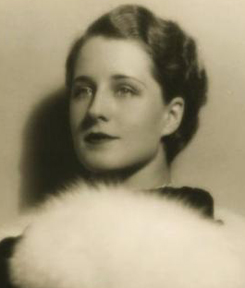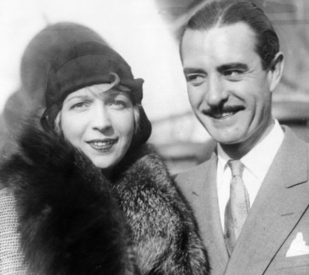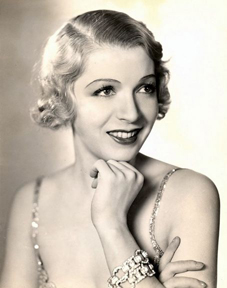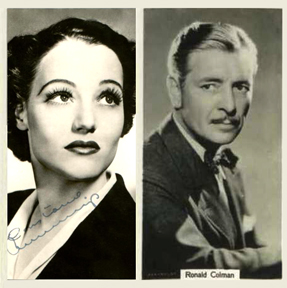The eleventh chapter from Hollywood Undressed, a 1931 memoir attributed to the assistant of masseuse and health guru Sylvia Ulback, a.k.a. Sylvia of Hollywood (but actually ghost-written for Sylvia by newspaper reporter and screenwriter James Whittaker), tells of a close call experienced in treating actress Norma Shearer .
.
FAT CHANCE
 GLORIA runs quite an establishment—butlers, footmen, and the rest. Down on the Pathé lot she rolled up her sleeves and did her day labor like an old trouper. But at home she was La Marquise de la Falaise et de la Coudraye, and had the big soft rugs, uniformed servants, and all the dog to prove it.
GLORIA runs quite an establishment—butlers, footmen, and the rest. Down on the Pathé lot she rolled up her sleeves and did her day labor like an old trouper. But at home she was La Marquise de la Falaise et de la Coudraye, and had the big soft rugs, uniformed servants, and all the dog to prove it.The house staff gave Sylvia the works, which is to say that she passed through about ten pairs of hands, to land finally in an upstairs den. There time passed in great chunks without any sign of Gloria Swanson. The boss was dead tired and had to pinch herself to keep awake. Whereupon a footman ambled in with a clinking tray, and she tried just one for luck and was sunk.
She had no idea what time it was when, presently, someone shook her out of a sound sleep and said: “Here I am—all ready for you.”
It was Gloria in her nightie. A clear case of overwrought nerves, with the inevitable results of facial lines and general puffiness. The treatment for that is delicate. If you start in pounding and pummeling at the start, the subject’s nerves get worse and worse, and the result you’re likely to get is the kind of weight reduction that is ruin—a stringy, jumpy body and a cavernous, drawn look about the face.
In the first few minutes Gloria admitted that the new sound-movie racket had her half-crazy. It took the boss two hours of gentle, soothing rubbing to get the overexcited star to sleep. Meanwhile she was that the job would take time; that, for a start, she’d have to reconcile herself to getting maybe a little fatter than she was; that the real work on her hips, chin and arms would have to wait. Gloria saw the point and said:
“Then I’ll have to have you all the time. You’ve got to give up your other people and work for me alone.”
Right away the boss remembered how that hook-up had worked out with Mae Murray —and even with Mary Duncan. It meant having to build up her clientele all over again when the contract died.
—and even with Mary Duncan. It meant having to build up her clientele all over again when the contract died.
The offer from Gloria was flattering enough. But the boss had got past the point where the name of a movie star, whispered, was enough to jerk her out of a sound sleep. She was able to keep her head when Swanson made her offer, because, for one thing, the savings account was doing nicely, and, for another, she had just taken on Norma Shearer, whom she had been angling to get for months.
Hedda Hopper steered Norma Shearer into Sylvia’s hands. At that, the boss nearly lost the M.-G.-M. star after the first treatment, which was given in Shearer’s home. Norma had been playing a lot of tennis, and had got stringy and muscular and jumpy, the way women always do when they go crazy about any sport. The first thing to do was to calm her down and get her to sleeping regularly as a preliminary to softening her. So the boss rubbed her for nearly two hours and left her sleeping like a child. The next morning we got a phone call from Hedda Hopper, who said:
“I don’t know what you did to Norma Shearer, Sylvia, but my name is mud in the movies if you’ve ruined her.”




